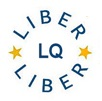Crossroads - Bridging the Digital Divide
DOI:
https://doi.org/10.18352/lq.7798Abstract
It’s so good to be in Cambridge, it feels almost like home. Let me start by stating that in the past year ITMB, a successful map publisher in British Columbia, Canada published more paper map titles than at any time in their history. Similarly, the U.S. Geological Survey (USGS) recently announced that they have ceased producing paper from their aerial photography archive and will only produce digital copies. I believe that both of these facts speak to the future of maps and digital data. It means there will be paper maps well into the future and there will be an increasing array of digital data - some of it reformatted, as in the USGS case, and most of it will be born digital. When asked to speak about GIS and its role in libraries I often find myself in a conundrum - am I here to slay the dragon, or to pet the dragon. The role of technology in libraries is not one that has been embraced by everyone, and often the technology itself seems to have been force-fed upon us. The library profession is not one that has historically been a proponent of change and the very nature of GIS is change. In one sense, we have been given the choice of becoming paper museums or, at the very least, making GIS technology available in our collections. Today, I would like to review the many ways that GIS is, or will, affect our collections. I will divide the presentation into a general overview of GIS in libraries, how it affects our acquisitions or collection development policies, its effect on cataloging, on reference services, staffing, and our web services. Then I will shift the focus a little and discuss the current situation at the Harvard Map Collection, the future role of legacy collections, and a look to the future.Downloads
Download data is not yet available.

Published
2005-03-31
Issue
Section
Articles
License
Copyright (c) 2005 David Cobb

This work is licensed under a Creative Commons Attribution 4.0 International License.
How to Cite
Crossroads - Bridging the Digital Divide. (2005). LIBER Quarterly: The Journal of the Association of European Research Libraries, 15(1). https://doi.org/10.18352/lq.7798





